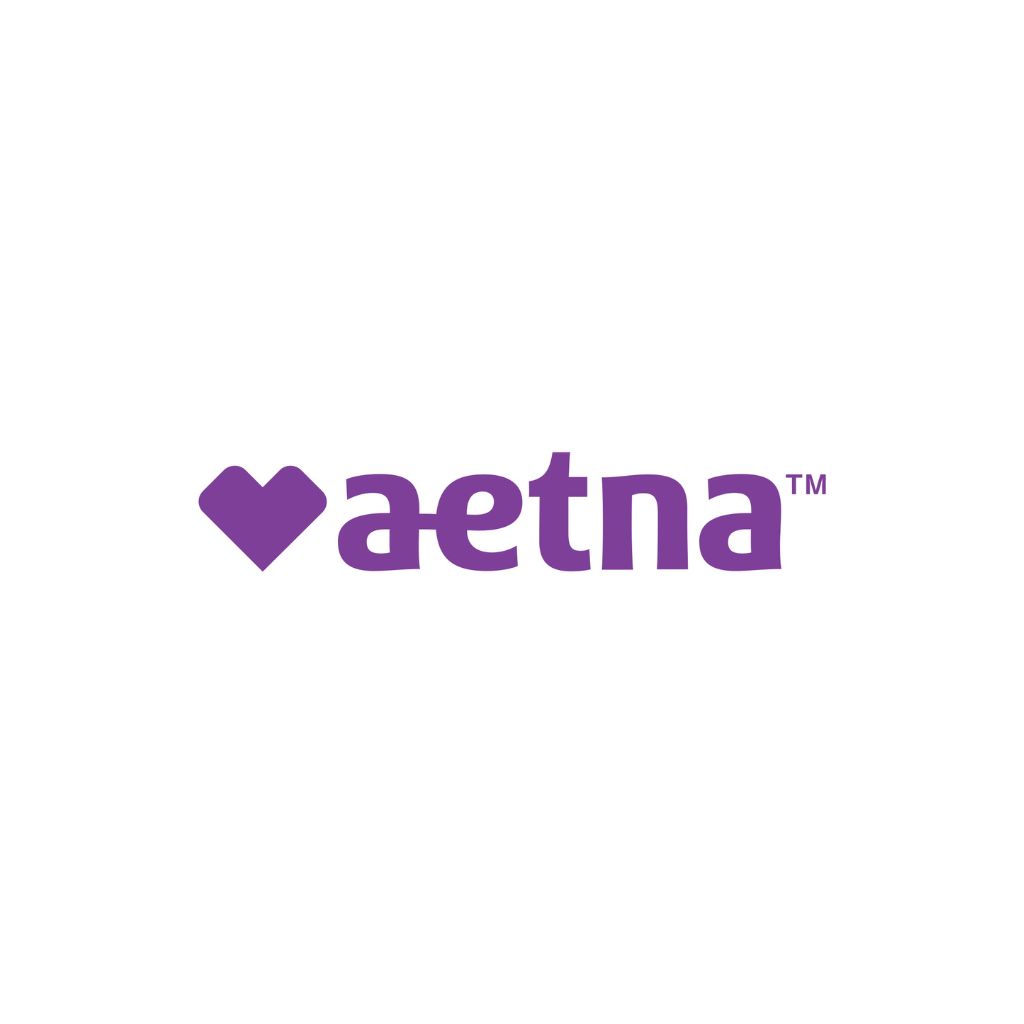Traditional IRA
Traditional IRAs: Unlock Your Financial Future with Raymond Senior Planning.

Traditional IRAs: Expert Guidance from Raymond Senior Planning
Welcome to Raymond Senior Planning, your trusted partner in securing a prosperous retirement through the power of Traditional IRAs. We understand that planning for your golden years is a significant step, and we’re here to guide you every step of the way. At Raymond Senior Planning, we recognize the importance of making informed financial decisions, especially when it comes to your retirement savings. Traditional IRAs are a tried-and-true method for building a secure financial future, and our team of experts is dedicated to helping you navigate the complexities of this valuable retirement tool. With decades of experience in retirement planning, we have assisted countless individuals and families in achieving their retirement goals. Whether you’re just starting your journey or seeking to optimize your existing Traditional IRA, our mission is to provide you with the knowledge and support you need to make the most of this powerful financial instrument. In the following sections, we’ll delve into the ins and outs of Traditional IRAs, exploring the benefits they offer, the rules and limits you should be aware of, and how they compare to other retirement accounts. We’ll also share real-life success stories from our satisfied clients and answer common questions that may be on your mind.
At Raymond Senior Planning, we believe that a secure retirement is within reach for everyone. Your financial peace of mind is our priority, and we’re here to empower you with the information and expertise required to make the best decisions for your future. Don’t hesitate to reach out to us for personalized guidance and a tailored retirement strategy.
Let’s embark on this journey together and pave the way for a retirement that you’ve always envisioned.
With decades of experience in retirement planning, we have assisted countless individuals and families in achieving their retirement goals. Whether you’re just starting your journey or seeking to optimize your existing Traditional IRA, our mission is to provide you with the knowledge and support you need to make the most of this powerful financial instrument. In the following sections, we’ll delve into the ins and outs of Traditional IRAs, exploring the benefits they offer, the rules and limits you should be aware of, and how they compare to other retirement accounts. We’ll also share real-life success stories from our satisfied clients and answer common questions that may be on your mind.
At Raymond Senior Planning, we believe that a secure retirement is within reach for everyone. Your financial peace of mind is our priority, and we’re here to empower you with the information and expertise required to make the best decisions for your future. Don’t hesitate to reach out to us for personalized guidance and a tailored retirement strategy.
Let’s embark on this journey together and pave the way for a retirement that you’ve always envisioned.
What is a Traditional IRA?
A Traditional Individual Retirement Account (IRA) is a tax-advantaged retirement savings vehicle designed to help individuals build a nest egg for their retirement years. It is a powerful tool that allows you to save and invest for the future while potentially enjoying immediate tax benefits. Key Features of a Traditional IRA:- Tax-Deferred Growth: One of the primary advantages of a Traditional IRA is that your investments within the account can grow tax-deferred. This means you won’t pay taxes on the earnings generated by your investments as long as the funds remain in the account.
- Tax Deductible Contributions: Depending on your income and whether you have access to an employer-sponsored retirement plan, your contributions to a Traditional IRA may be tax-deductible. This can lead to a reduction in your current-year taxable income, potentially resulting in a lower tax bill.
- No Capital Gains or Dividend Taxes: Inside a Traditional IRA, you can buy and sell investments, such as stocks, bonds, mutual funds, and more, without incurring capital gains taxes or taxes on dividends and interest. This allows your investments to compound more efficiently over time.
4. Penalty-Free Early Withdrawals for Certain Expenses: While the primary purpose of a Traditional IRA is to save for retirement, there are some circumstances in which you can withdraw funds before reaching the age of 59½ without incurring the usual 10% early withdrawal penalty. These include certain medical expenses, higher education costs, and first-time home purchases.
5. Required Minimum Distributions (RMDs): It’s important to note that Traditional IRAs come with mandatory distributions known as RMDs. Starting at age 72 (formerly 70½ prior to the SECURE Act), you must begin withdrawing a minimum amount from your Traditional IRA each year. These withdrawals are subject to ordinary income taxes.
Who is Eligible for a Traditional IRA?
Almost anyone with earned income can open and contribute to a Traditional IRA, regardless of age. However, there are income limits that may affect your ability to deduct contributions from your taxable income if you or your spouse are covered by a retirement plan at work.
In summary, a Traditional IRA is a tax-advantaged savings tool that allows you to invest for retirement while potentially reducing your current tax liability. It offers tax-deferred growth, potential tax deductions, and flexibility in investment choices. Understanding the rules and benefits of a Traditional IRA is a crucial step in planning for a secure retirement.
Benefits of Traditional IRAs
A Traditional Individual Retirement Account (IRA) offers a range of significant benefits that make it an attractive choice for individuals looking to save for retirement. Understanding these advantages can help you make informed decisions about your retirement planning.
1. Tax-Deferred Growth:
One of the most compelling benefits of a Traditional IRA is tax-deferred growth. Any investment earnings within the IRA are not subject to annual taxation. This means that your investments can grow and compound over the years without being eroded by capital gains or dividend taxes. This tax-deferred growth can result in a more substantial retirement nest egg over time.
2. Potential Tax Deductions:
Depending on your income and whether you have access to an employer-sponsored retirement plan (such as a 401(k, your contributions to a Traditional IRA may be tax-deductible. This deduction can reduce your taxable income for the year in which you make contributions, potentially leading to a lower overall tax bill. It’s important to check the current IRS guidelines and consult with a tax professional to understand your specific eligibility for deductions.
3. Investment Flexibility:
Traditional IRAs offer a wide range of investment options, including stocks, bonds, mutual funds, exchange-traded funds (ETFs), real estate investment trusts (REITs), and more. This flexibility allows you to tailor your investment portfolio to align with your financial goals, risk tolerance, and retirement timeline.
4. No Income Limits for Contributions:
Unlike some other retirement plans, Traditional IRAs do not have income limits that restrict who can contribute. As long as you have eligible earned income, you can make contributions, making it accessible to a broad range of individuals.
5. Penalty-Free Early Withdrawals for Certain Expenses:
While the primary purpose of a Traditional IRA is retirement savings, there are exceptions that allow you to withdraw funds before the age of 59½ without incurring the usual 10% early withdrawal penalty. Qualified expenses include certain medical costs, higher education expenses, and up to $10,000 for a first-time home purchase.
6. Spousal IRAs:
Married couples can maximize their retirement savings by using Spousal IRAs. If one spouse has little or no earned income, the working spouse can contribute to a Traditional IRA on behalf of the non-working spouse, potentially doubling the household’s retirement savings.
7. Potential for Lower Tax Bracket in Retirement:
During your retirement years, your income may be lower than it was during your working years. This can result in a lower tax bracket, meaning you’ll pay less in income taxes when you withdraw funds from your Traditional IRA in retirement.
8. Asset Protection:
In many cases, Traditional IRAs are protected from creditors in bankruptcy proceedings, providing an additional layer of financial security.
In summary, Traditional IRAs offer tax advantages, investment flexibility, and the potential for substantial growth over time. These benefits, combined with the ability to make penalty-free early withdrawals for specific purposes, make Traditional IRAs a valuable tool for building a secure retirement future.
How to Open a Traditional IRA
Opening a Traditional Individual Retirement Account (IRA) is a straightforward process that can put you on the path to securing your financial future in retirement. Whether you’re starting from scratch or looking to add to your existing retirement portfolio, here’s a step-by-step guide on how to open a Traditional IRA:
1. Determine Eligibility:
To open a Traditional IRA, you must have eligible earned income. This can come from various sources, including wages, salaries, self-employment income, alimony, and certain nontaxable combat pay.
2. Choose a Financial Institution:
Decide where you want to open your Traditional IRA. You can typically open one at various types of financial institutions, including banks, credit unions, brokerage firms, and online investment platforms. Consider factors such as fees, investment options, and customer service when selecting an institution.
3. Gather Required Documentation:
Before you start the application process, gather the necessary documents, including your Social Security number, government-issued ID (such as a driver’s license), and information about your employment and income.
4. Contact the Financial Institution:
Reach out to the chosen financial institution either online, by phone, or in person to express your intent to open a Traditional IRA. They will guide you through the application process.
5. Complete the Application:
Fill out the IRA application provided by the financial institution. You will need to provide personal information, including your name, address, and Social Security number.
6. Specify Contribution Amount:
Decide how much you want to contribute to your Traditional IRA for the tax year. Keep in mind that there are annual contribution limits set by the IRS. If you’re eligible for catch-up contributions (age 50 or older), consider taking advantage of the higher contribution limit.
7. Choose Investment Options:
Once your Traditional IRA is set up, you’ll need to decide how to invest the funds within the account. Financial institutions typically offer a range of investment options, such as stocks, bonds, mutual funds, ETFs, and more. Your choice of investments should align with your financial goals and risk tolerance.
8. Set Up Automatic Contributions:
Consider setting up automatic contributions to your Traditional IRA. This ensures regular contributions without the need for manual transfers, helping you stay on track with your retirement savings goals.
9. Review and Confirm:
Before finalizing your Traditional IRA account, review the terms and conditions, fees, and investment choices. Ensure that you understand all aspects of the account and confirm that your contributions align with IRS regulations.
10. Fund Your IRA:
Transfer funds to your Traditional IRA from your bank account or another eligible retirement account if you’re doing a rollover or transfer. You can also make contributions through payroll deductions if your employer offers this option.
11. Keep Records:
Maintain detailed records of your Traditional IRA contributions and transactions. This will be essential for tax reporting and tracking the growth of your retirement savings.
Opening a Traditional IRA is an important step toward securing your financial future in retirement. By following these steps and seeking guidance from your chosen financial institution, you can establish a tax-advantaged savings account that aligns with your retirement goals and offers the potential for long-term financial security.
Traditional IRA Contribution Limits and Rules
Understanding the contribution limits and rules associated with a Traditional Individual Retirement Account (IRA) is crucial for effective retirement planning. These regulations dictate how much you can contribute to your account and when you can make those contributions. Here’s an in-depth look at Traditional IRA contribution limits and rules:
Annual Contribution Limits:
The IRS sets annual contribution limits for Traditional IRAs. As of the most recent guidelines (as of my knowledge cutoff date in September 2021), the annual contribution limit for individuals under the age of 50 is typically the lesser of your earned income or $6,000 (or $7,000 if you are 50 or older, including a catch-up contribution). These limits may be adjusted for inflation in subsequent years.
Income Limits for Deductibility:
While there are no income limits that prevent you from contributing to a Traditional IRA, there are income limits that determine whether your contributions are tax-deductible. If you or your spouse is covered by an employer-sponsored retirement plan, such as a 401(k), the deductibility of your contributions may be reduced or eliminated if your modified adjusted gross income (MAGI) exceeds certain thresholds. It’s essential to check the current IRS guidelines to determine your specific deductibility limits.
Deadline for Contributions:
Contributions to a Traditional IRA for a particular tax year must be made by the tax filing deadline, which is usually April 15 of the following year (unless it falls on a weekend or holiday, in which case it’s the next business day). This provides an opportunity for last-minute contributions to lower your taxable income for the previous tax year.
Rollovers and Transfers:
You can transfer or roll over funds from other eligible retirement accounts (e.g., a 401(k) from a previous employer) into your Traditional IRA without counting those transfers toward your annual contribution limit. This allows you to consolidate retirement savings and potentially access a broader range of investment options.
No Mandatory Contributions:
Traditional IRAs do not have mandatory annual contribution requirements. You have the flexibility to contribute as much or as little as you choose, subject to the annual contribution limits.
Tax Deductibility for Non-Working Spouses:
If you have a spouse who doesn’t work or has limited earned income, you may be able to make contributions to a Traditional IRA on their behalf through a Spousal IRA. The same contribution limits and deductibility rules apply.
Required Minimum Distributions (RMDs):
Once you reach age 72 (formerly 70½ prior to the SECURE Act), you are required to start taking minimum distributions from your Traditional IRA. These RMDs are calculated based on your age and the balance of your account and are subject to ordinary income taxes. Failure to take RMDs can result in significant penalties.
Excess Contributions:
If you contribute more than the allowable limit to your Traditional IRA for a tax year, you must correct the excess by the tax filing deadline. Otherwise, you may incur penalties and additional taxes on the excess amount.
Age Limits for Contributions:
Unlike some retirement accounts, there is no upper age limit for making contributions to a Traditional IRA. As long as you have eligible earned income, you can continue to contribute even after reaching the age of 72.
It’s essential to stay informed about the latest IRS guidelines and consult with a tax professional or financial advisor to ensure that your contributions to a Traditional IRA align with your financial goals and comply with current tax laws.
Tax Implications of Traditional IRAs
Traditional Individual Retirement Accounts (IRAs) offer distinct tax advantages, but they also come with specific tax implications that are important to understand. Here’s an in-depth look at the tax implications of Traditional IRAs:
Tax-Deferred Growth:
One of the primary benefits of a Traditional IRA is tax-deferred growth. This means that any investment earnings generated within the account are not subject to annual taxation. Your investments can grow and compound over the years without incurring capital gains taxes or taxes on dividends and interest. This tax-deferral can result in substantial wealth accumulation over time.
Tax Deductibility of Contributions:
The tax deductibility of your contributions to a Traditional IRA depends on your income, filing status, and whether you or your spouse are covered by an employer-sponsored retirement plan, such as a 401(k). Here’s how it works:
If you are not covered by an employer-sponsored retirement plan, your contributions are typically fully deductible, regardless of your income.
If you or your spouse are covered by a retirement plan at work, the deductibility of your contributions may be limited based on your Modified Adjusted Gross Income (MAGI). These limits can change annually. Consult IRS guidelines or a tax professional for the most up-to-date information.
Taxation Upon Withdrawal:
The tax implications of a Traditional IRA become evident when you start withdrawing funds in retirement. When you take distributions from your Traditional IRA, those withdrawals are generally subject to ordinary income tax at your current tax rate. This means you’ll pay taxes on the money you withdraw, just like you would with regular income.
Required Minimum Distributions (RMDs):
Beginning at age 72 (formerly 70½ prior to the SECURE Act), you must start taking Required Minimum Distributions (RMDs) from your Traditional IRA. These annual distributions are calculated based on your age and the balance of your account and are subject to ordinary income taxes. Failing to take RMDs can result in substantial penalties.
Potential Lower Tax Bracket in Retirement:
Many retirees find themselves in a lower tax bracket during retirement compared to their working years. This can lead to tax savings when you withdraw funds from your Traditional IRA. However, your tax bracket in retirement will depend on various factors, including your retirement income sources and expenses.
Early Withdrawal Penalties:
Withdrawals from a Traditional IRA before age 59½ are generally subject to a 10% early withdrawal penalty, in addition to regular income taxes. However, there are exceptions that allow penalty-free withdrawals for specific purposes, such as certain medical expenses, higher education costs, and first-time home purchases. Be aware that while these exceptions exist, it’s generally advisable to keep your IRA funds invested for retirement to maximize their growth.
Tax Reporting:
You are required to report IRA contributions, conversions, and distributions accurately on your annual tax returns. The financial institution that manages your Traditional IRA will typically provide you with necessary tax documents, such as Form 1099-R for distributions.
Estate Planning and Inheritance:
Traditional IRAs can have estate planning implications. Upon your passing, your beneficiaries may inherit your Traditional IRA, and the tax rules for inherited IRAs can vary based on the relationship between the account holder and the beneficiary. Consult with an estate planning attorney or tax advisor for guidance on optimizing the tax treatment of inherited IRAs.
Understanding the tax implications of Traditional IRAs is essential for making informed decisions about your retirement savings strategy. It’s advisable to work with a financial advisor or tax professional to ensure that your contributions, withdrawals, and overall retirement plan align with your financial goals and the current tax laws.
Traditional IRA vs. Other Retirement Accounts
When planning for your retirement, you have several options for saving and investing your hard-earned money. Understanding the differences between Traditional IRAs and other retirement accounts is essential in making informed decisions that align with your financial goals and circumstances. Here’s a comparative analysis:
- Traditional IRA vs. Roth IRA:
- Tax Treatment:
- Traditional IRA: Contributions to a Traditional IRA may be tax-deductible, but withdrawals in retirement are subject to ordinary income tax.
- Roth IRA: Contributions to a Roth IRA are not tax-deductible, but qualified withdrawals in retirement are entirely tax-free.
- Income Limits:
- Traditional IRA: There are no income limits for contributing to a Traditional IRA, but there are limits for tax deductibility based on income.
- Roth IRA: Roth IRAs have income limits that determine whether you can contribute, and these limits can change annually.
- Required Minimum Distributions (RMDs):
- Traditional IRA: RMDs are required starting at age 72 (formerly 70½). You must take minimum distributions annually.
- Roth IRA: Roth IRAs do not have RMDs during the account holder’s lifetime, making them attractive for estate planning.
- Tax Bracket Considerations:
- Traditional IRA: Beneficial if you expect to be in a lower tax bracket in retirement.
- Roth IRA: Beneficial if you expect to be in a higher tax bracket in retirement or if you want tax-free withdrawals.
- Traditional IRA vs. 401(k):
- Sponsorship:
- Traditional IRA: Individual retirement account held by an individual at a financial institution.
- 401(k): Employer-sponsored retirement plan provided by companies to their employees.
- Contribution Limits:
- Traditional IRA: Lower annual contribution limits (as of my last knowledge update in September 2021).
- 401(k): Higher annual contribution limits (subject to IRS limits).
- Employer Matching:
- Traditional IRA: No employer matching as it’s an individual account.
- 401(k): Many employers offer matching contributions, which can significantly boost retirement savings.
- Tax Deductibility:
- Traditional IRA: Tax deductibility depends on income and employer-sponsored plan coverage.
- 401(k): Contributions are often tax-deductible, and employers may provide matching contributions.
- Investment Options:
- Traditional IRA: Offers a wide range of investment options.
- 401(k): Investment options are typically limited to those offered by the employer’s plan.
- Access to Funds:
- Traditional IRA: Generally more flexible in terms of accessing funds before retirement age.
- 401(k): Penalties may apply to early withdrawals.
- Traditional IRA vs. Roth 401(k):
- Tax Treatment:
- Traditional IRA: Contributions may be tax-deductible; withdrawals in retirement are taxable.
- Roth 401(k): Contributions are made with after-tax dollars, but qualified withdrawals in retirement are tax-free.
- Income Limits:
- Traditional IRA: No income limits for contributions, but deductibility may be limited based on income.
- Roth 401(k): Generally, no income limits for contributions.
- Employer-Sponsored:
- Traditional IRA: Not employer-sponsored; opened by individuals.
- Roth 401(k): Part of an employer-sponsored retirement plan, with contributions made through payroll deductions.
- RMDs:
- Traditional IRA: RMDs required starting at age 72.
- Roth 401(k): RMDs apply if the account holder is retired and not still employed by the plan sponsor.
- Traditional IRA vs. SEP IRA:
- Sponsorship:
- Traditional IRA: Individual retirement account.
- SEP IRA: Simplified Employee Pension IRA, typically used by self-employed individuals and small business owners to provide retirement benefits to employees.
- Contribution Limits:
- Traditional IRA: Lower annual contribution limits.
- SEP IRA: Higher contribution limits, allowing for potentially larger contributions.
- Employer Contributions:
- Traditional IRA: Contributions are made by the individual account holder.
- SEP IRA: Contributions are made by the employer, with a fixed percentage of compensation for all eligible employees.
- Eligibility:
- Traditional IRA: Open to individuals with eligible earned income.
- SEP IRA: Typically used by self-employed individuals and small businesses with eligible employees.
Choosing between these retirement account options depends on your individual circumstances, financial goals, and tax considerations. It’s advisable to consult with a financial advisor or tax professional to develop a retirement strategy that best suits your needs.
Our simple process to get you covered.
Listen.
Get to work!
Review Our Findings with You
Why Choose Raymond Senior Planning for your Traditional IRA?
At Raymond Senior Planning, we understand that your retirement is more than just a financial milestone—it’s the culmination of your life’s hard work, dreams, and aspirations. With so much at stake, you deserve a trusted partner who can guide you through the complexities of retirement planning and help you achieve the comfortable and secure retirement you’ve always envisioned.
1. Expertise and Experience:
With decades of experience in retirement planning, our team of dedicated professionals possesses the expertise and insights necessary to navigate the ever-changing landscape of retirement finance. We stay abreast of the latest industry trends, tax regulations, and investment strategies to provide you with the most informed advice and guidance.
2. Personalized Solutions:
We understand that every client’s financial situation and retirement goals are unique. That’s why we take a personalized approach to retirement planning. We’ll work closely with you to develop a tailored strategy that aligns with your specific objectives, risk tolerance, and timeline.
3. Comprehensive Services:
Raymond Senior Planning offers a comprehensive range of retirement planning services, including:
- Traditional IRA and retirement account management
- Tax-efficient retirement income planning
- Investment portfolio diversification
- Social Security optimization
- Estate planning and wealth preservation
- Health care and long-term care planning
No matter where you are in your retirement journey, we have the tools and resources to help you make informed decisions every step of the way.
4. Commitment to Your Financial Peace of Mind:
Your financial peace of mind is our top priority. We’re committed to helping you achieve the retirement you’ve worked so hard for, providing you with the confidence and security you deserve as you embark on this new chapter of your life.
5. Transparency and Trust:
We believe in open and transparent communication with our clients. You can trust that we’ll always provide honest and unbiased advice, and we’ll walk you through each step of the planning process, ensuring that you have a clear understanding of your retirement strategy.
6. Client-Centric Approach:
Our clients are at the center of everything we do. We are dedicated to building lasting relationships based on trust, integrity, and a commitment to your financial success. We’re here not only to help you plan for retirement but to support you throughout your retirement years.
7. Proven Track Record:
Our track record of success is a testament to our commitment to excellence in retirement planning. We take pride in the positive impact we’ve had on the lives of our clients, helping them achieve their retirement dreams and maintain financial security in their golden years.
In your journey towards a secure and fulfilling retirement, choosing the right partner is paramount. Raymond Senior Planning is here to provide you with the guidance, expertise, and personalized solutions you need to make your retirement dreams a reality. Let us be your trusted companion on the path to financial freedom and peace of mind in retirement.
Contact us today to schedule a consultation and take the first step towards a brighter retirement future.
What Our Clients Say!

Raymond Senior Planning helped my husband and I navigate Medicare and Retirement stress free! Beata answered our questions every step of the way and explained options we had once my husband was ready for retirement. Everyone looks forward to retiring but no one tells you how to go about all these changes from medical insurance and what to do with your 401k.
J. K.

I kept seeing commercials on the TV regarding Medicare Savings and I was too nervous to call a random number. A friend referred me to Raymond Senior Planning and Beata took the time to explain the Medicare Savings Program in great detail. After our first appointment, I was very thankful to hear I am eligible for the program and how smooth the process was because of Beata and her staff.
N. T.

Raymond Senior Planning helped me save hundreds on my medications last year. I was not aware that two of my drugs were not covered with my current plan. Beata reviewed all my medications and Doctors and found me an Advantage plan that covered everything! She even took the time to check different pharmacies in my area to make sure I was getting the most savings. Thank you RSP!
K. M.

Our Satisfaction Promise for Your Traditional IRA
At Raymond Senior Planning, your satisfaction is our utmost priority. We are committed to providing you with the highest level of service and expertise in retirement planning. We understand the importance of your financial well-being and the trust you place in us to help you achieve your retirement goals.
Our Promise to You:
- Personalized Service: We will work closely with you to understand your unique financial situation, goals, and concerns. Your retirement plan will be tailored to your specific needs, ensuring it aligns with your aspirations and risk tolerance.
- Transparency: We believe in open and honest communication. You will always receive clear, straightforward advice and information about your retirement planning, investments, and financial strategies.
- Expertise: Our team consists of experienced retirement planning professionals who stay up-to-date with industry trends, regulations, and investment strategies. You can trust in our knowledge and commitment to your financial success.
4. Comprehensive Solutions: We offer a wide range of retirement planning services, from managing Traditional IRAs to estate planning and health care considerations. We are dedicated to addressing all aspects of your retirement needs.
5. Continuous Support: Your relationship with us doesn’t end after your retirement plan is in place. We will provide ongoing support, monitoring, and adjustments to ensure your financial well-being throughout your retirement years.
6. Confidentiality: Your financial information and personal details will always be treated with the utmost confidentiality and privacy.
Our Satisfaction Guarantee:
If for any reason you are not completely satisfied with our services or feel that we have not met our promises to you, please let us know. We are committed to addressing your concerns promptly and finding solutions to ensure your satisfaction.
Your financial peace of mind is our primary goal, and we are dedicated to helping you achieve it. We want you to feel confident and secure in your retirement planning journey with Raymond Senior Planning.
Thank you for choosing us as your trusted partner in securing your retirement future. Your satisfaction is the foundation of our success.
Trusted Insurance Providers





Frequently Asked Questions (FAQs) about Traditional IRAs
At Raymond Senior Planning, we believe that informed decisions are the cornerstone of successful retirement planning. We understand that you may have questions about Traditional IRAs, retirement strategies, and our services. To provide you with clarity and guidance, we’ve compiled a list of frequently asked questions. Whether you’re just beginning your retirement planning journey or seeking additional information to enhance your financial security, our FAQs are here to provide you with answers. Explore the questions and answers below to gain valuable insights into retirement planning and how Raymond Senior Planning can assist you in achieving your financial goals.
An Individual Retirement Account (IRA) is a tax-advantaged savings account designed to help individuals build a nest egg for retirement. With an IRA, you can contribute money, which is then invested in a range of options, including stocks, bonds, and more. The earnings in the IRA grow tax-deferred until you withdraw them in retirement, making it a valuable tool for building your retirement fund.
The main difference between a Traditional IRA and a Roth IRA lies in the tax treatment. With a Traditional IRA, your contributions may be tax-deductible, and you pay taxes when you withdraw funds in retirement. In contrast, a Roth IRA is funded with after-tax dollars, and qualified withdrawals are entirely tax-free. Each type has its unique advantages, and the choice depends on your financial situation and goals.
As of my last knowledge update in September 2021, the annual contribution limit for IRAs is typically $6,000 for individuals under the age of 50. If you are 50 or older, you may be eligible for catch-up contributions, allowing you to contribute up to $7,000 per year. It’s important to note that contribution limits may change over time, so please check the latest IRS guidelines.
Yes, you can have both a Traditional IRA and a Roth IRA, but the total annual contribution limit applies to both accounts combined. This means that your combined contributions to both accounts cannot exceed the annual limit set by the IRS. Having both types of IRAs can provide tax diversification in retirement.
Generally, you can start taking penalty-free withdrawals from your Traditional IRA at age 59½. However, you must start taking Required Minimum Distributions (RMDs) by age 72 (formerly 70½). Certain exceptions allow for penalty-free withdrawals before age 59½, such as for certain medical expenses or first-time home purchases.
Raymond Senior Planning is dedicated to providing expert guidance in IRA management and comprehensive retirement planning. Our experienced team can assist you in optimizing your IRA contributions, managing investments, minimizing taxes, and creating a retirement strategy tailored to your unique goals and needs. We are here to empower you on your journey to a secure and fulfilling retirement.
